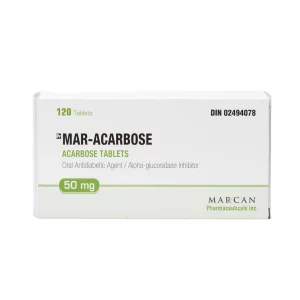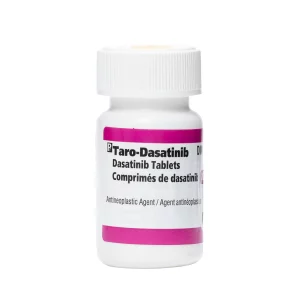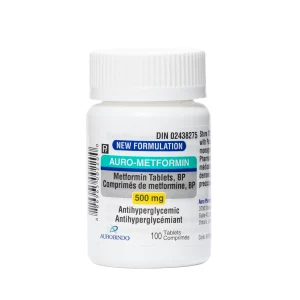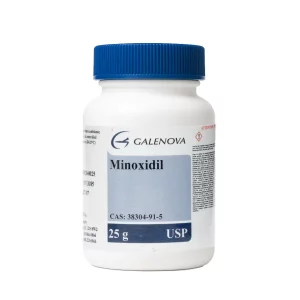Your cart is empty.
Your cart is empty.
Dasatinib is a medication originally approved for treating certain types of cancer, particularly leukemia. In recent years, interest in Dasatinib vs Imatinib has grown not only for cancer treatment but also in the longevity community, where dasatinib is being studied for its potential anti-aging benefits.
Researchers and biohackers alike are exploring how Dasatinib longevity effects might help remove harmful aging cells, offering new hope for extending healthy years. For those intrigued by this emerging science, it is also essential to know how to order Dasatinib safely and responsibly. This article will explore what dasatinib is, why it’s gaining attention for anti-aging, and how it is being used in wellness circles.
Dasatinib is a cancer drug that’s now drawing attention for longevity and healthy aging. Researchers and biohackers alike are exploring dasatinib anti aging potential because it targets senescent cells, damaged cells that build up with age and contribute to chronic inflammation. This drug’s ability to reduce inflammation links to its Dasatinib anti-inflammatory benefits, which may support healthier tissues over time.
Many are curious about how to Purchase Dasatinib safely as interest in its longevity applications grows. This article will explore how dasatinib is used, what science says, how people dose it, and who is trying it for longevity.

Aging is a natural process, but it is influenced by many factors at the cellular level. One key factor is the buildup of senescent cells. These are damaged or “zombie” cells that stop dividing but do not die. Over time, they accumulate and release harmful signals that cause inflammation and tissue damage.
Dasatinib may help clear these senescent cells in a process called senolysis. By removing them, it reduces inflammation and supports healthier tissue function. This effect has led scientists to test dasatinib as a senolytic, a drug that targets aging cells to improve healthspan.
Dasatinib is often paired with quercetin, a natural compound found in many fruits and vegetables. Together, they target different types of senescent cells, increasing the effectiveness of the treatment.
Interest in dasatinib for anti-aging began with preclinical studies in animals, where it showed promise in improving age-related symptoms and extending lifespan. Small human clinical trials followed, testing combinations of dasatinib and quercetin. These trials showed improvements in physical function and reduced markers of senescence in treated individuals.
Health influencers, longevity experts, and biohackers have since promoted dasatinib senolytic protocols, sharing anecdotal results and encouraging further research. The growing public interest, alongside ongoing studies, fuels excitement about its potential role in healthy aging.
Unlike cancer treatments, which often require daily high doses, dasatinib for anti-aging is typically taken in short pulses or cycles. This method aims to clear senescent cells without continuous drug exposure, reducing risks associated with long-term use.
A common approach is to take dasatinib for two or three days a month or every few weeks. This intermittent dosing is designed to maximize benefits while minimizing potential side effects.
Many individuals combine dasatinib with quercetin during these cycles to enhance senolytic effects. This regimen is usually done under medical supervision, especially since the drug was not originally developed for aging.

The doses used for anti-aging purposes are much lower than those prescribed for cancer. Typical dasatinib anti-aging dosage ranges from 5 mg to 10 mg per day during pulse treatments, compared to much higher doses in cancer therapy.
Lower doses help reduce the risk of side effects while still effectively targeting senescent cells. However, dosage can vary depending on individual health, body weight, and medical history.
It’s crucial to emphasize that even low-dose dasatinib use should be supervised by a healthcare professional experienced in off-label treatments. Proper monitoring ensures safety and allows adjustment based on response and tolerance.
Quercetin is a plant-based flavonoid found in apples, onions, and berries. It has antioxidant and anti-inflammatory properties and, importantly, shows senolytic activity. When combined with dasatinib, the two compounds target different populations of senescent cells.
This synergy means they can more effectively reduce senescent cell burden than either compound alone. Clinical trials and animal studies have documented improvements in tissue function and inflammation reduction with this combo.
This pairing is now widely used in experimental anti-aging protocols and is a focus of ongoing research.
Who Might Consider This?
Dasatinib for anti-aging is mainly considered by health-conscious individuals interested in preventing age-related decline and optimizing longevity. People tracking biological age through markers like epigenetic clocks and DNA methylation may explore senolytic treatments as part of a broader health strategy.
It’s also popular among biohackers and longevity enthusiasts who are open to experimental interventions but remain cautious about safety.
It is important to note that dasatinib is not FDA-approved for anti-aging and should only be used under expert guidance.
Using dasatinib for anti-aging is off-label, meaning it is not officially approved for this purpose. While low-dose, intermittent use appears promising, side effects are possible. These can include fatigue, gastrointestinal issues, and others related to the drug’s action.
Anyone interested should consult a qualified healthcare provider familiar with dasatinib and senolytic protocols. Careful medical supervision and regular monitoring of biomarkers are essential for safety.
Self-medicating or unsupervised use is strongly discouraged due to potential risks.
Longevity clinics and health optimization centers specializing in anti-aging medicine may offer guidance and supervised access to dasatinib protocols. These centers often conduct baseline and follow-up testing to monitor the impact on biological age markers like methylation clocks and inflammatory markers.
Protocols can be tailored based on age, health status, and goals, making professional support invaluable.
It helps clear senescent cells, which may slow down aging and reduce inflammation.
Usually in short pulses of 2–3 days per month, not daily.
Around 5 mg to 10 mg per dose, often combined with quercetin.
No, it’s currently approved only for certain cancers. Anti-aging use is experimental.
Only under medical supervision with proper monitoring.
Because together they target different types of senescent cells more effectively.
Dasatinib’s role in anti-aging is an exciting frontier backed by promising research. It targets the root cause of aging at the cellular level, senescent cells, and may help extend healthy years. However, it remains an experimental treatment and should be approached cautiously. Anyone considering dasatinib for longevity should prioritize medical guidance and focus on safe, informed use. As science progresses, this drug may become a key tool in the quest for longer, healthier lives.
Justice, J. N., Nambiar, A. M., Tchkonia, T., LeBrasseur, N. K., Pascual, R., Hashmi, S. K., … & Kirkland, J. L. (2019). Senolytics in idiopathic pulmonary fibrosis: Results from a first-in-human, open-label, pilot study. EBioMedicine, 40, 554-563.
https://doi.org/10.1016/j.ebiom.2018.12.052
Kirkland, J. L., & Tchkonia, T. (2017). Cellular senescence: A translational perspective. EBioMedicine, 21, 21-28. https://doi.org/10.1016/j.ebiom.2017.04.013
Palmer, A. K., & Kirkland, J. L. (2016). Aging and adipose tissue: Potential interventions for diabetes and regenerative medicine. Experimental Gerontology, 86, 97-105. https://doi.org/10.1016/j.exger.2016.03.008
Roos, C. M., Zhang, B., Palmer, A. K., Ogrodnik, M. B., Pirtskhalava, T., Thalji, N. M., … & Kirkland, J. L. (2016). Chronic senolytic treatment alleviates established vasomotor dysfunction in aged or atherosclerotic mice. Aging Cell, 15(5), 973-977.
https://pubmed.ncbi.nlm.nih.gov/26864908/Zhu, Y., Tchkonia, T., Pirtskhalava, T., Gower, A. C., Ding, H., Giorgadze, N., … & Kirkland, J. L. (2015). The Achilles’ heel of senescent cells: From transcriptome to senolytic drugs. Aging Cell, 14(4), 644-658.
https://doi.org/10.1111/acel.12344


Acarbose blocks carbohydrate breakdown in the small intestine, preventing rapid glucose absorption spikes.

Dasatinib eliminates senescent cells through selective apoptosis, clearing age-damaged tissues from the body.

Metformin inhibits hepatic glucose production while enhancing insulin sensitivity, offering cost-effective Type 2 diabetes management.

Minoxidil dilates scalp blood vessels, increasing nutrient delivery to hair follicles while extending the anagen growth phase duration.
Unlock savings on bundles and elevate your online experience today!